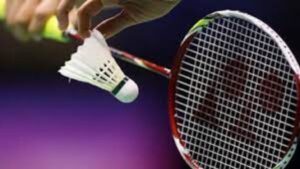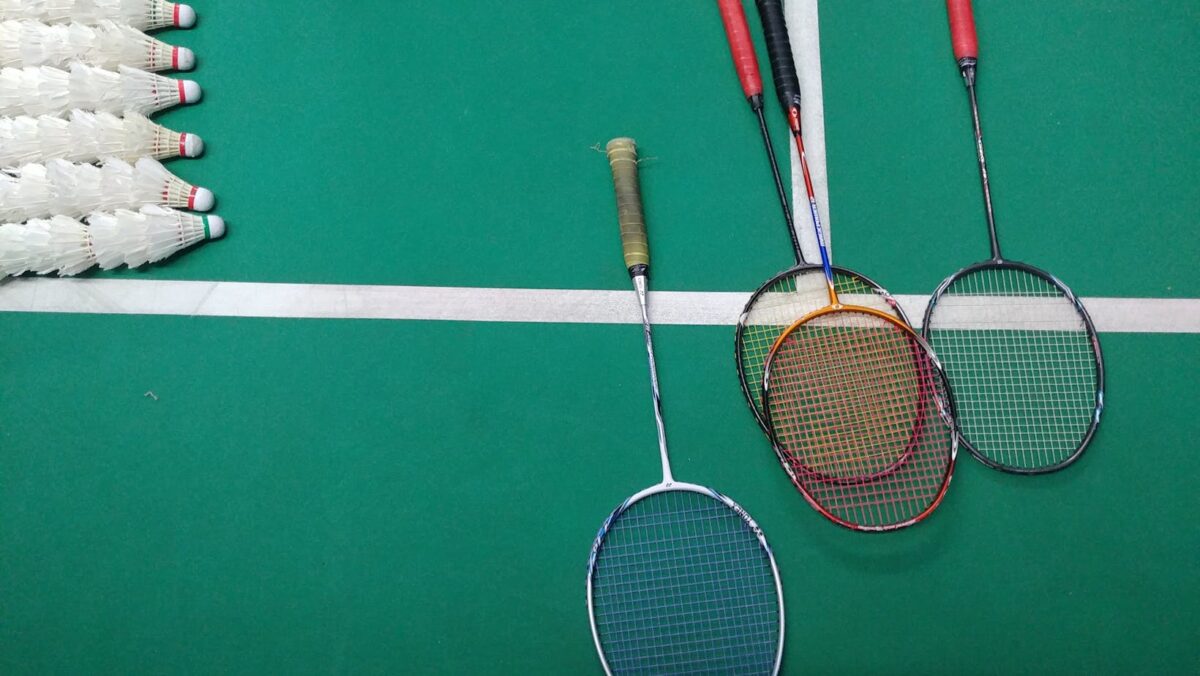When we talk about the hierarchy of badminton in Indonesia, it’s impossible not to mention Badminton Association of Indonesia PBSI or Persatuan Bulutangkis Seluruh Indonesia. This organization is the lifeline and backbone of Indonesian badminton. It’s the governing body that oversees and manages all aspects related to this beloved sport in the country.
Ever since its establishment back in 1951, PBSI has tirelessly worked towards promoting, developing and uplifting badminton at both national and international levels. Through their efforts, they’ve nurtured countless talents who’ve gone on to represent Indonesia on global platforms.
Not only does PBSI organize local tournaments and championships, but they also prepare Indonesian shuttlers for international competitions. They’re responsible for training athletes, providing them with top-notch facilities, ensuring fair selection processes, and ultimately helping them achieve their dreams. So if you’re curious about who’s behind the success of Indonesian Badminton – it’s none other than PBSI!
Organisasi Induk Bulutangkis Indonesia Adalah
I’ve always been intrigued by the role that badminton plays in Indonesian culture. From small towns to bustling cities, you’ll find it’s a sport deeply ingrained into the fabric of society here. It’s not just a pastime; it’s a way of life for many.
The roots of badminton in Indonesia go back to the early 20th century when it was introduced by British colonial officers. However, it wasn’t until 1950 when this beloved sport got its formal structure with the establishment of organisasi induk bulutangkis indonesia adalah, or the All-Indonesia Badminton Federation as we know it today.
Since then, PBSI has played an instrumental role in promoting and developing badminton across all corners of Indonesia. It’s responsible for organizing tournaments at various levels, training athletes, and grooming them for international competitions.
Indonesia’s success on world stages can be traced back to 1963 when PBSI joined forces with four other Asian nations – Malaya (now Malaysia), Japan, Thailand and India – to establish what is now known as Badminton Asia Confederation (BAC). This move opened up new opportunities for Indonesian shuttlers who began making their mark internationally.
One cannot forget about Rudy Hartono Kurniawan – a name synonymous with Indonesian badminton history. Dominating men’s singles from 1968 till 1974 at All England Open Championships, he set records that still stand tall today.
 Over time, numerous other players like organisasi induk bulutangkis indonesia adalah Susi Susanti and Taufik Hidayat added glory to Indonesia’s rich badminton legacy by bringing home Olympic golds. Their passion and dedication are testament to Indonesia’s love for this sport which continues to inspire future generations.
Over time, numerous other players like organisasi induk bulutangkis indonesia adalah Susi Susanti and Taufik Hidayat added glory to Indonesia’s rich badminton legacy by bringing home Olympic golds. Their passion and dedication are testament to Indonesia’s love for this sport which continues to inspire future generations.
To say that Indonesians are passionate about badminton would be an understatement. From the packed stadiums during national tournaments to children playing in village lanes, it’s clear that badminton holds a special place in Indonesian hearts. And with PBSI’s continuous efforts, there’s no doubt that Indonesia will continue to remain a powerhouse in world badminton for years to come.
Role of the Indonesian Badminton Association
Diving straight into the heart of badminton in Indonesia, it’s impossible to ignore the pivotal role of the Indonesian Badminton Association, also known as (PBSI). Formed in 1951, PBSI has steadfastly served as the backbone for all things badminton across our archipelago.
An interesting facet is their focus on young talent. Under PBSI’s wings, many budding players have transformed into internationally acclaimed athletes – think names like organisasi induk bulutangkis indonesia adalah! 
The above table clearly demonstrates how PBSI’s efforts have led to an increased number of major title wins over time.
Another noteworthy role they play involves international representation. They’re tasked with ensuring Indonesia gets ample exposure on global platforms such as Thomas Cup or Uber Cup. Plus, they’ve been instrumental in lobbying for Jakarta to host esteemed events like BWF World Championships.
Lastly, there’s PBSI’s commitment to promoting sportsmanship values and ethical behavior among its players. Through strict regulations and guidelines they ensure fairness reigns supreme during matches while maintaining a high standard of conduct from each player.In essence, PBSI isn’t just an organization; it’s practically a driving force that keeps propelling Indonesian badminton towards new heights.
Structure of the National Badminton Organization
Peeling back the layers, let’s delve into the structure of Indonesia’s national badminton organization, known as Badan Pengurus Pusat Persatuan Bulu Tangkis Seluruh Indonesia (PBSI). PBSI was established on May 5th, 1951 and it’s since been at the forefront of Indonesia’s badminton scene.
At its core, PBSI is segmented into several committees. These include a Central Executive Committee responsible for high-level decisions and organisasi induk bulutangkis indonesia adalah policy-making in Indonesian badminton. It’s also worth noting that there are Regional Committees which manage local affairs in various provinces across Indonesia – a testament to the widespread popularity of badminton in this archipelago nation.
Within these committees, roles vary significantly. There are chairpersons who lead discussions and decision-making processes. Then we’ve got secretaries handling administrative tasks and treasurers supervising financial matters. It’s akin to gears working seamlessly within an engine – each role integral to keeping the organization running smoothly.
Aside from these operational bodies, there are also individuals allocated for specific tasks related to player development and tournament organization. Coaches, trainers, talent scouts – they all fall under this umbrella in PBSI’s structure.
Now let’s not forget about another crucial part: The Athletes Commission. This group is composed of active or retired professional players who provide valuable insight into athlete welfare issues, ensuring that their voices are heard within the organization.
To summarize:
- Central Executive Committee
- Regional Committees
- Various roles within committees (Chairperson, Secretary, Treasurer)
- Player development personnel (Coaches, Trainers)
- Athletes Commission
Each piece has a pivotal role in driving Indonesian badminton forward on both regional and international stages.
Achievements in Indonesian Badminton
Indonesia’s badminton prowess isn’t something that sprung up overnight. It’s been a long journey, filled with ups and downs, triumphs and setbacks. From the early days of the sport until now, let me share some of the highlights.
Many might not know that Indonesia has bagged gold medals at five different Olympic Games too! Susi Susanti and Alan Budikusuma were pioneers for the nation, both clinching gold at Barcelona Olympics in 1992 — just think about how monumental that must have been!
And it doesn’t stop there. The country continues to churn out world-class shuttlers even today. For instance, Kevin Sanjaya Sukamuljo and Marcus Fernaldi Gideon currently rank among the best men’s doubles pairs worldwide.
Moreover, let’s not forget about women’s singles player Tai Tzu Ying who is also making waves internationally. She recently secured her spot as world number one – a testament to Indonesia’s enduring strength in badminton.
While these are just snapshots of Indonesia’s accomplishments on the badminton court, they speak volumes about their dedication and proficiency in this sport. It goes without saying that Indonesian badminton has left an indelible mark on the global stage – I can’t wait to see what future holds for them!
Future Outlook for Indonesian Badminton
I’ve been keeping a close eye on the vibrant world of Indonesian badminton and it’s clear that this sport is set for an exciting future. We can anticipate a host of promising talents, innovative strategies, and increased international recognition. Let’s delve deeper into what lies ahead.
Firstly, Indonesia’s youth development programs are churning out some truly impressive players. These young shuttlers are not only honing their skills but also displaying remarkable sportsmanship and strategic thinking at such tender ages. They’re being trained by seasoned veterans who have competed at the highest levels themselves, ensuring a solid foundation for the next generation.
Secondly, advancements in organisasi induk bulutangkis indonesia adalah technology are redefining how coaching and training are done in badminton across the globe, including Indonesia. From high-tech rackets to detailed analytics software, technology is allowing players to understand their game better and make significant improvements.
In conclusion (but not really), I believe we’re witnessing just the beginning of an upswing in Indonesian badminton’s fortunes – there’s so much more to come! There may be challenges along the way but if recent developments are anything to go by, I’m confident that Indonesia will continue making its mark on this beautiful sport.

